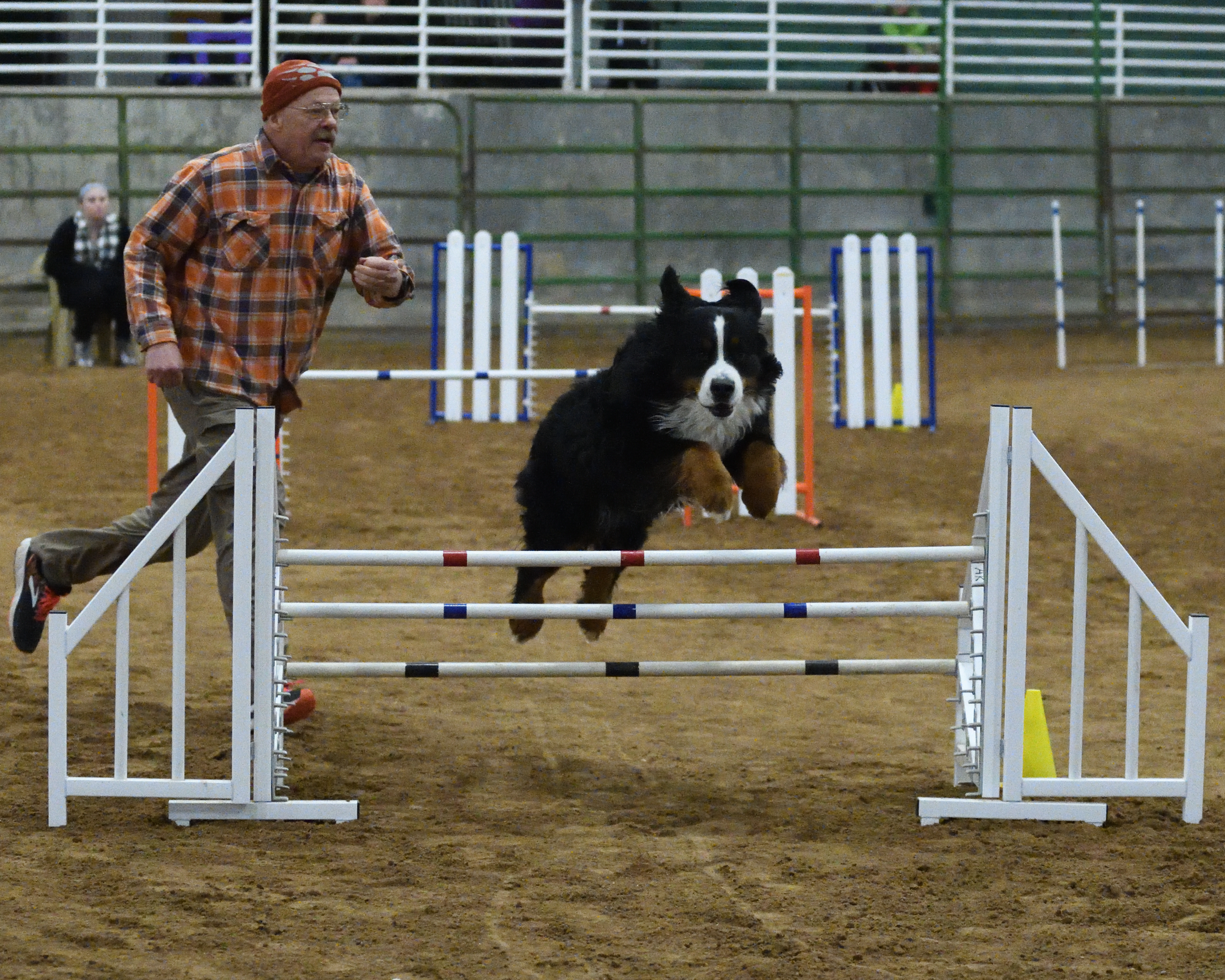Randy Gaines: Hooked on Agility
March 18, 2019

Though Idaho State University’s Chief Information Officer Randy Gaines loves his job working with several different parts of the university, dogs have always held a special place in his heart.
After working with dogs for years, Gaines and his wife Melinda have trained and entered their dogs in national-level agility competitions.
Gaines has been working with dogs since 1979 when he got involved with Siberian Huskies. Realizing that his dogs would need extra training, Gaines got involved in dog training.
But it wasn’t until 15 years ago that Gaines and his wife started competing in agility competitions around the nation and he switched to training the breed Bermese mountain dogs.
“We got hooked on agility—really addicted,” Gaines said. “It’s neat because in agility competitions, you don’t have to beat anybody to win, which makes for a fun environment.”
Agility competitions are based on the time it takes for a dog to run the course and for making the fewest mistakes while running the course. Dogs and their trainers have anywhere from 38 to 70 seconds to run a course, depending on the event and the size of the dog. If a dog runs the course under the allotted amount of time, they are considered successful. Every competition has a different course, so neither the dogs nor trainers know what the course will be like until they arrive to compete.
“You are competing against a course, and no two courses are the same,” Gaines said. “Because of this, the agility community is very supportive. Everybody cheers for everybody.”
Though agility competitions are challenging, they are beneficial for dogs and trainers alike.
“It’s great for the dog,” Gaines said. “It challenges them mentally and physically, while also challenging the trainer too.”
Over the 15 years that Gaines has been involved in agility training, he has learned how to best prepare dogs for competitions. He starts training his dogs when they are puppies, working on basic things like engagement. Dogs can’t start competing until they are at least 15 months old.
“It takes a lot of work, and you really have to train the dogs before they can start to compete,” Gainessaid. “But it’s fun.”
Gaines and his wife travel to competitions all over the nation, but they typically compete in Utah, Montana and Idaho. Agility competitions keep Gaines busy, as he is gone two weekends a month.
Because of Gaines’ devotion to agility competitions, he has had the opportunity to see a wide array of dogs compete. He’s seen everything from basset hounds to chihuahuas, but he says that rescue dogs are the truly remarkable ones.
“Rescue dogs can be changed by agility training because they have a job to do and it gives them confidence they didn’t have before,” Gaines said. “Rescue dogs seem to appreciate agility competitions a little bit more.”
Though Gaines tries to stay close to home for competitions, he has had the opportunity to compete in the National Agility Championships multiple times. This year his wife will compete in Tulsa with her Pyrenean Shepard.
Despite being busy with his full-time job at ISU and competitions, Gaines still makes time to teach basic manners dog classes at the Pocatello Pet Lodge. This class is eight weeks and helps dogs from all walks of life.
“It’s so neat to see a dog come in that is shy or reserved or has terrible manners and in eight weeks you see such a difference,” Gaines said. “We have a lot of shelter dogs come through that you don’t know what they have been through, so it’s nice to see them develop into good and happy dogs.”
Gaines and his wife also teach a beginning agility class every few years that helps train dogs and their owners for agility competitions.
Though training takes time and effort from the dog and the trainer, Gaines doesn’t have any plans to stop competing.
“I hope to do this for as long as I can,” Gaines said. “I know people who are in their 80s who continue to compete. It seems to give them a reason to stay fit and keep moving.”
Despite any struggles that Gaines has encountered through competing, he says that it is always worth it when a dog succeeds.
“Working hard and seeing your dog succeed is the best part,” Gaines said. “It’s nice to see it all come together in the end.”
Categories:
